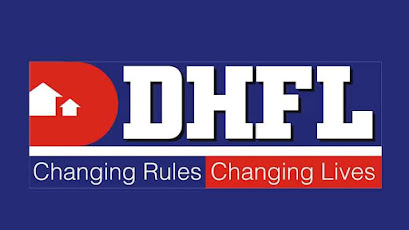At its peak, India’s third biggest lender, the famous name Dewan Housing Finance Corporation or DHFL founded by renowned Rajesh Kumar Wadhawan and led by now CEO Kapil Wadhawan has seen its days from glory to gloomy days. It is a company which created a huge buzz in Indian stock market in 2018 through 2019.
To understand the DHFL crisis we have to understand the business
model of such shadow banks or commonly known as Non-Banking Financial Company
or NBFC. NBFC or shadow banks are basically banking companies without public
banking licence from the Reserve Bank of India. NBFC’s like DHFL are in
business to lend out loans for housing development and secure project
development rights in tier 2 and tier 3 cities. These NBFC’s do not use their
own money to lend out to its customers, rather it raises money from mutual
funds and issues its debt instruments or debt paper. They earn money using
spread technique, the difference between interest earned from its customers and
interest paid to its creditors is their earning since they raise money at a low
interest rate from market and lend it at higher rates to retail customers.
The
Problem
The problem started due to what is commonly known as
‘Asset-Liability Mismatch’. Which in short could mean, it used its short-term
lending for long-term project and assets development, which strained its cash
flow. The company had raised debt of period around 1 year and lent money to
retail customers up to the payback period of 10 to 15 years. As a result, it
was having difficulty in meeting its obligations. DHFL thereby defaulted in
interest payment of 960 Crore INR.
In September 2018, India’s credit and banking industry was
reeling through a huge loss due to IL&FS crisis which also had the same
business model as DHFL. DHFL’s debt raising was also taking a huge hit due to
this. When a big company like DHFL defaults in such an interest payment the
investor’s market does not take it lightly. Mutual Funds were becoming prudent
of lending to shadow banks altogether. Due to this credit rating agencies
CRISIL and CARE downgraded the credit rating of DHFL to the lowest possible
grade ‘default status’. Share price of DHFL took a huge dip after this.
The problem became more intricate when a news organisation
Cobrapost revealed a 31,000 Crore fraud, where the company had allegedly lent
money to shell companies and associate companies and that money ended in
promoters’ personal accounts. Later these shell companies defaulted in
repayments and weren’t even classified as NPA as per RBI norms. This led to
public banks filing a legal suit and initiating a forensic audit against 80,000
Crore debt ridden DHFL. The forensic audit report by KPMG revealed that
allegations were true and 25,000 Crore INR were in fact lent to shell
corporations and companies of associates even to companies having strong
political links, the money which ended up in promoters’ personal accounts. KPMG
couldn’t even audit all the loans and advances due to missing of legal
documents. The audit revealed a DHFL’s terrorist Dawood Ibrahim connection
where it had lent huge sums to Dawood’s associate using a shell corporation
Sunblink Real Estate Pvt. Ltd.
 |
| Kapil Wadhwan |
The credit and banking industry were so over exposed to DHFL’s crisis which occurred after already huge crisis of IL&FS that India economy went into liquidity crunch. Mutual Funds and investors took huge losses as they had to completely write off their debt holdings in DHFL resulting in their NAV dipping more than 50%. The stock price of DHFL which once soared at 690 INR is now trading at 15 INR thereby losing 90% of its value. ED and CBI thereby started a legal pursuit against promoters Kapil Wadhawan. Government of India issued a look-out notice for the promoters to prevent them from leaving the country. Even as we write this blog, investigation is being carried out against DHFL and their promoters with initial charge-sheets already been filed.
Follow On Instagram: @kbitblogs - Click Here

Comments
Post a Comment